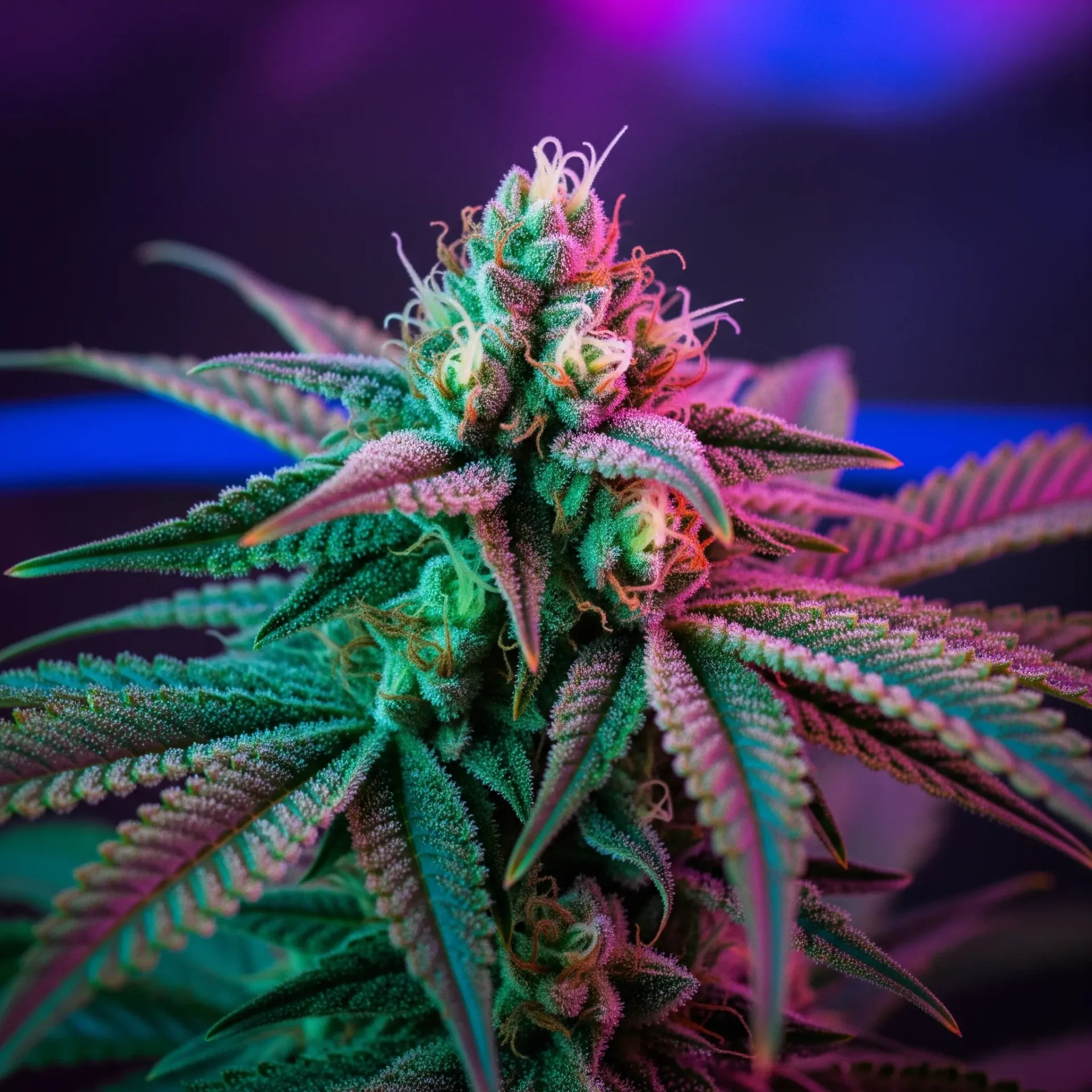The right lighting is crucial for successful cannabis cultivation. However, not all light is created equal – the spectrum, intensity, and duration of the light all influence growth, health, and yield. In this guide, we explain which light spectrum cannabis plants need at each stage and which types of lamps are best suited.

Why the light spectrum is important
Cannabis plants not only use light to generate energy, but also respond to different wavelengths. Chlorophyll primarily absorbs blue (400-500 nm) and red (600-700 nm) light, while other pigments such as carotenoids and phytochromes utilize broader spectra.
“Is normal white LED light sufficient, or does cannabis need special spectra?”
- Many growers use standard LEDs with success, but targeted spectra can significantly increase efficiency.
Optimal light spectra for every growth phase
1. Blue light (400–500 nm) – For strong growth
- Effect:
- Stimulates compact, bushy growth (short internodes).
- Promotes chlorophyll production.
- Important in the seedling and vegetative phase.
- Critical question: “Can too much blue light stress plants?”
- Counterargument: Yes, excessive blue light can lead to stunted growth – a balanced spectrum is crucial.
2. Red light (600–700 nm) – The flower booster
- Effect:
- Signals the flowering phase to the plant (photomorphogenesis).
- Increases flower formation and trichome production.
- Far red light (700–750 nm) can accelerate bud ripening.
- Debate: “Is pure red light sufficient during flowering?”
- Answer: No, a mix of red and blue (e.g. 660 nm + 450 nm) gives better results.
3. Green light (500–600 nm) – The underestimated helper
- Effect:
- Penetrates deeper foliage (unlike blue/red which is absorbed by upper leaves).
- Can support photosynthesis in lower leaf layers.
- Reduces stress in 24/7 lighting (not total darkness).
- Myth: “Green light is useless because plants reflect it.”
- Fact: Studies show that about 30–50% of green light is still absorbed!
4. UV light (100–400 nm) – The controversial insider tip
- Effect:
- UV-A (315–400 nm) can increase THC and terpene production (plant defense response).
- UV-B (280–315 nm) strengthens cell structure, but too much damages the plant.
- Warning:
- UV light requires careful dosage – too much will cause burns.
- Not all LED panels emit true UV (some only “purple” light).
Comparison of lighting systems
| Lamp type | Advantages | Disadvantages |
|---|---|---|
| LED | Energy efficient, long lifespan, spectrum optimized | Higher acquisition costs |
| HPS (sodium vapor lamps) | Strong light intensity, proven for flowering | High power consumption, heat generation |
| CFL (compact fluorescent lamps) | Cheap, good for cuttings & young plants | Low penetration, inefficient for flowering |
Practical tips for lighting
- Adjust photoperiod: 18/6 (growth) vs. 12/12 (flowering).
- Observe PPFD values: 200-400 µmol/m²/s (growth), 600-900 µmol/m²/s (bloom).
- Use reflectors: Minimize stray light for maximum efficiency.
Conclusion
The ideal light spectrum for cannabis depends on the stage and individual goals. While LED technology is becoming increasingly popular, HPS and CFL lamps still have their place. Experiment with spectrums and measure the results—this is the only way to find the best solution for your grow.